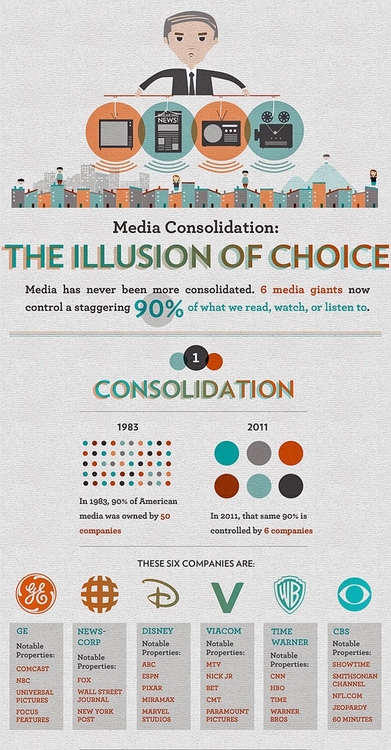It’s always sad to see innovations rejected by people being misinformed or by beliefs, traditions or values that dismiss science and the facts. The societal response to new innovations is largely determined by the process that the public is informed and involved. Most of the public watch television, read newspapers and believe they are well informed by these corporate media sources. What most don’t realize is that large media sources corporate goals are to spur profits for the company, not to accurately and fairly report news. 90% of American media is controlled by only 6 corporations! These conglomerates make obscene amounts of profits and in 2010 News Corp avoided $875 million in US Taxes [1] (Please follow link below and view the infographic). Does this sound like an industry that would accurately report news that doesn’t serve their economic interests?
Innovators normally aim to create reliable new technologies that exhibit low risks for operators and surroundings. When quality is taken into the design process, it helps innovators create new products that will last well within the intended time frame. Competition can spur innovation between leading innovators, while it can hinder innovation for smaller firms [2]. Individuality can contribute positively to a design team by adding a larger range and depth of information to an innovation team, while it can contribute negatively to the effectiveness of the use of that information [3]. Some values are a double edged sword, but remain to be implemented in the design process to different extents for their beneficial properties.
Ethics plays an increasing role in innovation, for technologies are being used in more places and in more ways than expected. Designers must consider hypothetical situations that can arise while using their products during the design phase. For example, a private aircraft designed for flight and aerobatics can be modified to spy on people or even used to hurt someone. This raises the dilemma of moral overload for designers and can temporarily spur design, however, this also raises cause for additional innovation within the product to prevent ethical scenarios. While designers cannot prevent every possible scenario involving misuse of their product or service, they should aim to prevent all of them and during routine product use, ethical issues should certainly not arise.
If the information that citizens base their decision making on is incomplete, innovations can be blocked unjustly. To decrease hindrance of innovation by misinformation, beliefs, and values, society and policy makers should be better informed, also innovators should also clearly describe their products. People should utilize the internet and research varied viewpoints to make more educated decisions and beliefs about an innovation before coming to conclusions. Official news outlets need to be liable and responsible for the quality and fairness of their content. Also, public education in many countries should be improved and higher education made more accessible. When dealing with emotional technologies, debates can be arranged with scientists and representatives of the public, beginning with emotional issues. These can systematically be addressed firsthand with facts, then an effective debate on the innovation can be conducted.
Sources:
*Image Source is [1]
- Dailyinfographic.com,. 'The Illusion Of Choice [Infographic] | Daily Infographic'. N.p., 2012. Web. 21 Oct. 2015. URL: http://www.dailyinfographic.com/the-illusion-of-choice-infographic
- Aghion, Philippe, et al. Competition and innovation: An inverted U relationship. No. w9269.
National Bureau of Economic Research, 2002. - Dahlin, Kristina B., Laurie R. Weingart, and Pamela J. Hinds. "Team diversity and information
use." Academy of Management Journal 48.6 (2005): 1107-1123.
